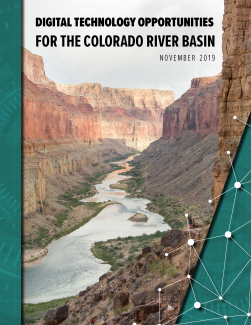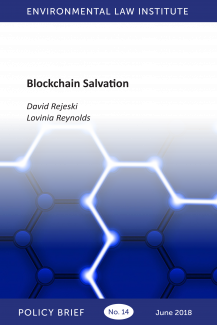The companies best prepared to reap the benefits of a waste-free society will be those that understand that the traditional linear model of resource extraction to disposal is ultimately unsustainable. Leadership businesses are powering the transition.
Thomas Singer is principal researcher in the Sustainability Center at The Conference Board, a global business research organization. Singer is the author of numerous publications, including Business Transformation and the Circular Economy.
By 2030, the global middle class will comprise an estimated 5.4 billion people, more than doubling in size from its 2010 total. As a result, companies can expect more consumption and greater demand for the raw materials that go into making countless products. For businesses, the increased purchasing power of a bigger middle class undoubtedly brings good news, but the scenario also brings challenges.
The companies best prepared to reap the benefits of this scenario will be those that understand that the traditional linear economy is ultimately unsustainable. The conventional, age-old approach can be defined as a take-make-waste model, in which raw materials create products that ultimately end up in landfills, waterbodies, or are otherwise disposed. Alternatively, companies that hope to remain competitive in this brave new world should begin paying attention to — and enacting attributes reflective of — the concept of the circular economy. Such a model aims to keep products, components, and materials at their highest utility and value at all times. At its simplest level, the circular economy is about finding ways to decouple economic growth from the use of limited resources.
While a concerted effort by companies can help surmount this demographic challenge, the current way of doing business undoubtedly lacks the efficiency to handle the pressures of an extra three billion middle-class consumers. A surge in demand for goods will stress natural resources and raw materials — ones already over-exploited, such as minerals, oil, water, and lumber. Even greater competition for these resources may cause significant price shocks for raw materials and may disrupt existing supply chains. Consider that “water crises” has appeared in the World Economic Forum’s list of top five global risks in terms of impact in each of the last five years. Continuing down the take-make-waste path will expose companies to significant procurement and supply chain risks, as the resources they depend on grow increasingly scarce.
For most companies, the aforementioned challenges tend to fall into the oblivion of the long-term-risks category. To be fair, some companies with robust strategic planning functions take long-term risks such as these into serious account. But for most, short-termism rules the day. What some call “quarterly capitalism” often sidetracks issues that go beyond a fiscal-year timeframe.
However, while the demographic and resource-use trends fall more into the long-term category, several short-term pressures are making some companies rethink the sustainability of their models. Consider the notable shifts in the types of products and services in growing demand by consumers. Surveys find that almost half of Americans would spend more money on purchases if they could have a guarantee of ethical and responsible manufacturing practices. Two-thirds of global online consumers express willingness to pay more for products and services from companies that make positive environmental and social impact a priority (an increase from 50 percent in 2013). Admittedly, consumer demand for sustainable products is a notoriously tricky trend to measure — does sentiment translate into purchases? — but the overall signals are encouraging.
The most significant pressures for companies to incorporate circular economy attributes into their business strategies are actually coming from other businesses. And these are current, immediate pressures, not future forecasts. Dell, for example, finds that it is not uncommon for requests for proposal from commercial and public-sector customers to include sustainability criteria, which in some cases can account for as much as 15 percent of a bid. As more and more companies establish sustainability goals — such as waste reduction or energy-efficiency targets — these companies become increasingly interested in products and services that can help meet those outcomes. This was a key realization for Kimberly-Clark: some of its disposable and hard-to-recycle products (such as nitrile gloves and single-use garments) stood increasingly at odds with the sustainability goals of its customers. This realization led to the development of the company’s RightCycle project, a circular economy initiative aimed at converting these hard to recycle products into useful new items.
As Dell and Kimberly-Clark have found, pressures from evolving customer needs are nudging companies to rethink their business models and consider alternatives to wasteful linear versions. In a recent survey by The Conference Board, one-third of company executives agree that, compared to three years ago, their companies prefer to be offered services that extend the lifetime of a product rather than having to purchase a new one. A similar percentage of respondents agree that their companies are now more likely to use a model based on pay-per-use of a product. These trends have spurred the launch of several circular economy pilots and business models, including remanufacturing and product-as-a-service businesses, among others. The implications are significant: Companies need to prepare themselves to meet these changing customer dynamics or face the real possibility of becoming irrelevant and going extinct.
The circular economy concept is not new. In fact, early versions of the concept date back to the 1960s, but regulation and national policies to promote this model remain in their infancy. To date, most circular economy initiatives remain voluntary and driven largely by individual corporate efforts, along with support from organizations such as the Ellen MacArthur Foundation. However, some recent and emerging regulatory activity related to the model highlight the need for businesses to continue to engage with policymakers on this front. Companies that stay on the sidelines may find themselves unprepared when forced to make changes to their business models, while companies that have been actively involved in circular economy thinking will have an advantage by anticipating regulation.
The most noteworthy regulatory activity is taking place in Europe. In December 2015, the European Commission adopted a Circular Economy Package to stimulate the EU’s transition to a sustainable manufacturing model. The package consists of an EU Action Plan for the Circular Economy that establishes actions and targets, including the development of standards for secondary raw materials and measures to promote reparability, durability, and recyclability of products. The package includes legislative proposals on waste, which set targets for reduction and establish measures for waste management and recycling. For example, the proposals set common EU targets for recycling 65 percent of municipal waste and 75 percent of packaging waste by 2030. The proposals also set measures to promote reuse and incentivize producers to put greener products on the market and support recovery and recycling schemes.
Several legislative proposals have already been delivered under the EU Action Plan. A few examples include a proposed regulation to create a single market for fertilizers made from secondary raw materials (such as recovered nutrients); mandatory product design and marking requirements to make it easier and safer to dismantle, reuse, and recycle electronic displays (such as computer monitors and televisions); and a proposal to amend the directive that restricts the use of hazardous substances in electrical and electronic equipment (the RoHS Directive).
In addition, several individual European countries are implementing roadmaps and national strategies to promote circular economy activity. For instance, last year The Netherlands and Finland released strategic roadmaps outlining their visions for the circular economy. The Hague’s roadmap includes a goal of a 50 percent reduction in the use of raw materials by 2030. Other countries have been at this for longer, with Germany having introduced a Circular Economy Act in 2012 and Denmark having laid out a national waste reduction strategy in 2013.
Regulatory initiatives focused on the circular economy have also emerged in Japan and China. Japan has had a version of its current Law for Promotion of Effective Utilization of Resources in place since 1991. Its regulatory efforts led to the creation of a number of circular economy indicators and associated targets, including measures of resource productivity and material recycle rate. Tokyo’s targets for 2020 include increasing resource productivity to 460,000 yen of GDP per tonne of resources used (up from the 2015 target of 420,000). The goal also includes increasing the overall material recycle rate to 17 percent (up from the 2015 target of 14-15 percent).
China first introduced circular economy issues as a national development strategy in its 12th Five-Year Plan (2011-15). They remain a significant part of the Five-Year Plan ending in 2020. One of the government’s targets entails increasing the reuse of solid industrial waste as a share of total waste from 65 percent in 2015 to 73 percent in 2020, and 79 percent in 2025. To further promote the growth of circular economy initiatives, in 2013 the government founded the China Association of Circular Economy, a national multi-industry organization. Among the group’s focuses are issues related to industry, agriculture, resource recycling, remanufacturing, and green consumption. In addition, as in the case of Japan, China’s statistics bureau has a number of indicators that the government aggregates to create a circular economy development index.
In the United States, EPA has adopted Sustainable Materials Management as a regulatory framework. Much like the circular economy concept, SMM is a systematic approach to using and reusing materials more productively over their entire lifecycles. The focus of SMM revolves around four primary objectives: decrease the disposal rate, which includes source reduction, reuse, recycling, and prevention; reduce the environmental impacts of materials across their lifecycle; increase socioeconomic benefits; and increase the capacity of state and local governments, communities, and other stakeholders to adopt and implement SMM policies, practices, and incentives. The Resource Conservation and Recovery Act sets the legislative basis for SMM in the United States.
At the supranational level, the circular economy represents a key element of the United Nations Sustainable Development Goals. While voluntary and non-binding, Goal 12 refers to “responsible consumption and production,” and includes a target calling for a substantial reduction of waste generation by 2030 through prevention, reduction, recycling, and reuse. This is particularly relevant for companies that are aligning their business strategies with the UN goals.
While regulatory activity continues to evolve, in many cases business pressures — not regulation — have driven companies’ circular economy initiatives. In fact, in a survey by The Conference Board of over 50 company executives, cost savings ranked as the number-one reason for pursuing circular economy initiatives, with 44 percent of respondents pointing to this motive. By comparison, only 6 percent of respondents pointed to regulation as the primary driver of their companies’ circular economy initiatives. The focus on cost savings is not all that surprising, given the expected future price volatility of raw materials. For businesses that rely heavily on such resources, circular models provide a hedge against volatile prices.
Along with cost savings, a key driver of companies’ circular economy initiatives is evolving customer preferences. As mentioned previously, the types of products and services customers are looking for are shifting, and several companies are looking to circular models to remain relevant. Waste Management, for example, had to revisit its business model to retain customers. Realizing in the 2000s that landfill volumes were dropping, and strongly sensing that market pressures were pushing customers to embrace different waste strategies, Waste Management paused to try to comprehend the future impact of these trends on the business. Were they just short-term? What was the risk of inaction?
Company leadership recognized that failure to quickly adapt to changing customer needs could put the firm at risk of becoming irrelevant. This realization catalyzed a shift in mindset — participating in the circular economy (or “cradle to cradle” thinking, as it was referred to at the time) was crucial for Waste Management to remain relevant to customers and their evolving needs. Today, the traditional landfill business accounts for only a small portion of the company’s revenue, as more and more customers pursue zero-waste goals. “Green services,” which include recycling and environmental consulting, account for as much as half of Waste Management’s revenues.
The company’s early focus on circular economy initiatives centered on ways to reduce, reuse, or eliminate materials, particularly by looking at byproducts and waste materials from large customers. For example, one of Waste Management’s early initiatives involved working with U.S. auto companies to capture waste materials, such as scrap metal, and return them back to the production loop by finding new uses for the material — a traditional closed-loop initiative. Today, these initiatives have evolved to move Waste Management further up the value chain, collaborating with product designers and manufacturers to learn how their work affects the ability to capture products at their end of life.
The company works closely with designers to identify materials that either have a lower environmental impact or greater value, and can therefore be used in closed-loop initiatives. By going further up the value chain, Waste Management influences purchasing decisions and works side by side with designers to identify their specific problems associated with waste — and engineer them out. The company’s circular economy focus has widened to look not only at capturing and returning waste materials to the production loop, but also identifying ways to produce items that are ultimately more recoverable. This shift to tackling waste reduction at the design stage — rather than at end of life — also aligns with the current focus of the EU Action Plan.
The core premise of the circular economy — finding ways to decouple economic growth from the use of limited resources — has inspired a number of business initiatives with significant revenue-generation potential. For instance, five years ago Philips embarked on a transformation process that resulted in a decision to embed circular economy thinking into its core business. As for the thinking, what has helped Philips stay in business for 125 years — through several periods of economic disruption — has been the company’s ability to adapt to changing needs. For instance, Philips believes that if the company wants to be around for at least another 125 years, it will have to shift the way it and other companies use resources, given that current levels of consumption will not be sustainable.
In the case of Philips, the company’s main focus on circular economy initiatives hinges on the notion of switching from selling products to selling services. For example, “light as a service” is one of Philips’ primary circular economy initiatives — a shift away from selling light fixtures to providing lighting solutions. The company sees this as a response to a clear customer need. On the one hand, it is about financial considerations — customers find it much easier to swallow operational rather than capital expenditures. It also helps Philips stay on top of the latest customer needs and learn about customer usage patterns. And it allows the firm to extend replacement cycles to longer periods. Anyone not convinced that circular economy initiatives contribute to business value should take note: Circular economy initiatives such as light as a service already account for about eight percent of Philips’s annual revenue, and the company plans to double this amount by 2020.
Hewlett-Packard is another company that has benefited from innovative circular economy initiatives. The Internet of Things — essentially the interconnection of smart devices — has been a key enabler of the company’s circular economy initiatives. Take HP’s Instant Ink service, for example. By subscribing to this service, consumers’ internetconnected printers recognize when ink cartridges are low and HP then automatically ships new cartridges directly to the consumer. The new cartridges include return envelopes, enabling HP to close the loop by incorporating up to 80 percent of the plastics from returned cartridges into the manufacturing of new ones. The initiative’s direct-to-consumer model has also helped HP eliminate about 67 percent of materials used per printed page (primarily by eliminating the over-packaging retailers need for marketing and theft-prevention reasons). And since the costs of shipping cartridges to customers are now internalized, the product-as-a-service model incentivizes HP to maximize the amount of ink included in each cartridge, which also means that users need to replace Instant Ink cartridges less frequently.
For HP, much of the success of Instant Ink comes from the fact that the service addresses customer pain points. Notably, Instant Ink is marketed as an easier and more affordable option for consumers (customers can save up to 50 percent compared to purchasing ink from traditional outlets), and not as a circular economy or sustainability initiative. The service introduces sustainability benefits without pushing them as such to consumers.
Companies like HP understand that technology plays an important role as an enabler of the circular economy. Take 3-D printing as an example. 3-D printing has the potential to make it easier for companies to make production-ready parts on demand and locally, which can help extend the life of products and encourage design for repairability. This disruptive technology could potentially relocalize manufacturing.
Circular economy initiatives are not without their challenges. Companies that have launched successful pilots have done so only after overcoming multiple roadblocks and failed attempts. One of the biggest challenges in launching these initiatives comes from the need to align the interests and expectations of multiple partners along the value chain. Because circular economy initiatives often involve collaborating on the materials end and sourcing side, as well as with partners on the logistics of product take-back, disassembly, and reuse, ensuring open and transparent communication is crucial. These initiatives rarely succeed in silos.
The importance of close collaboration is unsurprising given the central role that innovation plays in circular economy initiatives. When The Conference Board surveyed global CEOs in 2016, two of the top three strategies they point to for meeting the Innovation and Digitization challenge relate to collaboration: engaging in strategic alliances with customers, suppliers, and other business partners and establishing a strong collaborative culture that encourages cooperation and coordination across functions and business units. The collaborative nature of circular economy initiatives means there is added importance in establishing partnerships based on transparency and trust. A lack of trust in partners is a major reason behind failed projects. When initiatives fail, either internally or with customers, it is often because of breakdowns in communication that result in stakeholders not being aligned about the shared risks and the shared value of the initiatives. While business partnerships matter, an overreliance on partners introduces a significant set of challenges.
Regulatory roadblocks can also present a significant challenge to circular economy initiatives. Specifically, inconsistencies in regulations across geographic regions and borders can add complexity and cost to these initiatives. Without uniform rules, something as simple as moving materials across frontiers can come at a high price tag and erode most of the economic value from business models that rely on product take-back systems. There is a clear need for addressing these regulatory issues at a policy level in order to prevent the unintended consequences of these rules from stifling circular economy initiatives. These challenges highlight the need for businesses to engage at the policy level.
The ultimate success of circular economy initiatives, much like the success of broader corporate sustainability initiatives, depends largely on having the support and buy-in from leaders who are willing to invest in them. This is not a simple ask: Obtaining buy-in from the brass ranks as the number one circular economy challenge companies point to, according to The Conference Board. But for companies that wish to remain relevant and competitive in the long term, this is an imperative. If there is one thing in common among companies that have successfully launched circular economy initiatives, it is that their CEOs and board members understand the concept, can connect it to business value, and can convey its value to investors, customers, and other stakeholders. TEF



